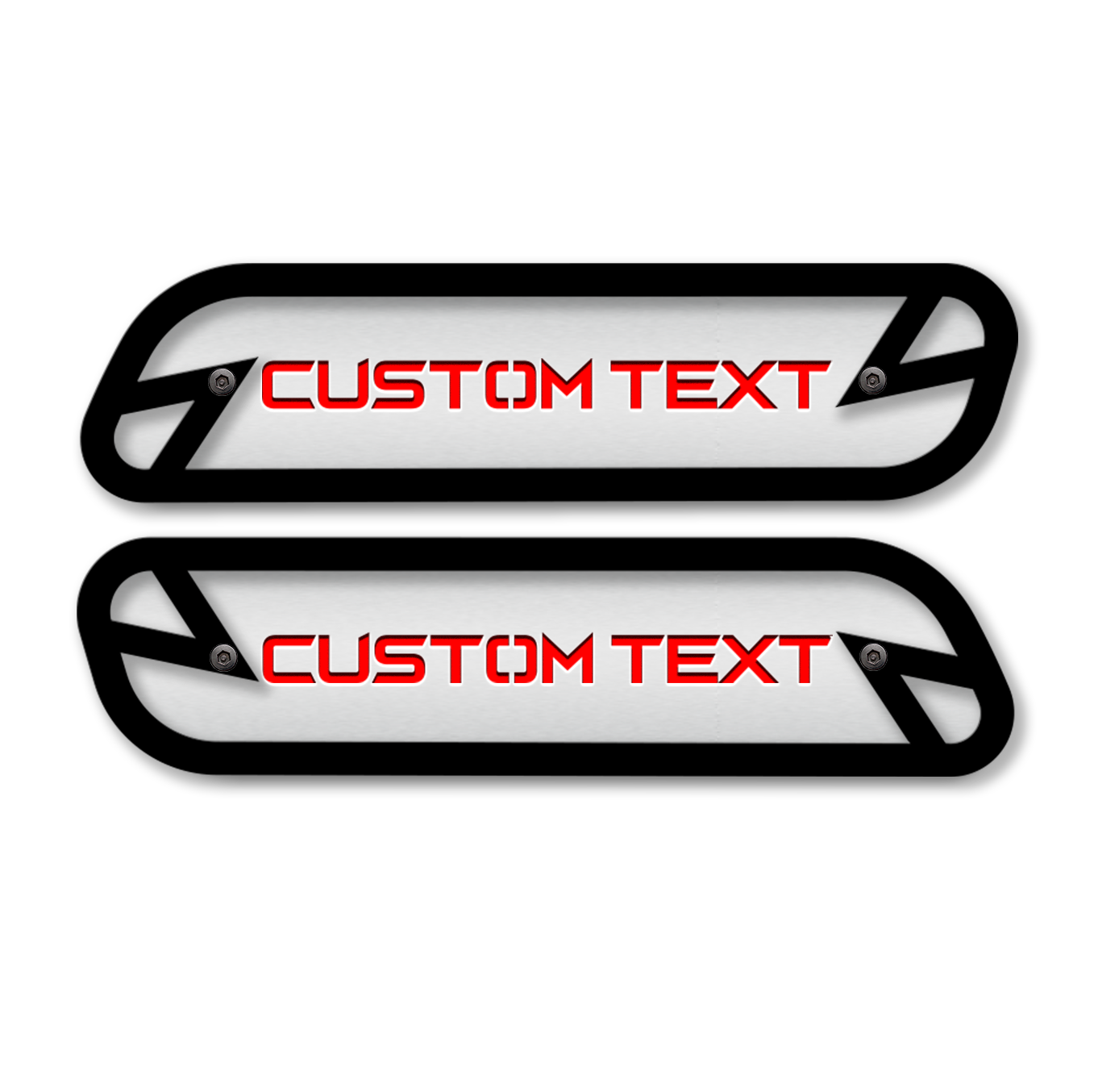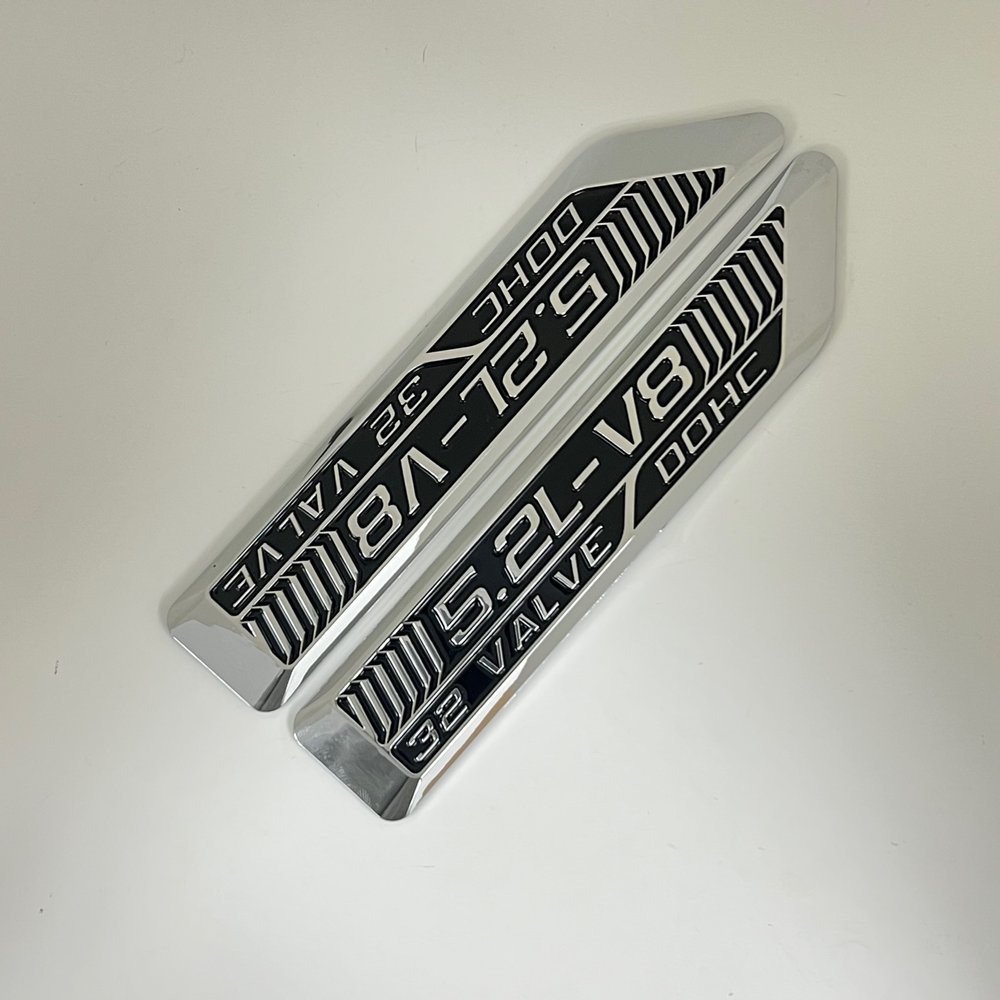Display Your Design with an Individualized Custom Emblem
Display Your Design with an Individualized Custom Emblem
Blog Article
Producing a Long-term Impression With Custom-made Emblems: Layout Tips and Ideas
The development of a custom emblem is an essential action in establishing a brand's identity, yet several overlook the nuances that add to its performance (Custom Emblem). A well-executed design not only interacts core values however additionally resonates with target audiences on several levels. Concentrating on components such as shade selection, typography, and symbolic importance can improve the symbol's influence. As we discover these critical components, it ends up being clear that there is even more to crafting a symbol than plain visual appeals; comprehending these principles can transform your technique to brand name depiction. What crucial facets should be focused on for optimal result?
Understanding Your Brand Name Identification
Recognizing your brand identification is important for creating custom symbols that resonate with your target audience. By plainly articulating what your brand name stands for, you can make sure that the design components of your emblem mirror these core principles.

Following, identify crucial attributes of your brand, such as dependability, individuality, or development. These characteristics must guide the style procedure, affecting shapes, symbols, and typography. A well-defined brand name identification not only aids in producing a remarkable emblem but likewise cultivates brand name loyalty and recognition. Eventually, a symbol that truly mirrors your brand identity will produce a purposeful link with your target market, reinforcing your message and enhancing your overall brand method.
Picking the Right Color Styles
Picking the appropriate shades for your custom-made emblem plays a critical function in conveying your brand's identification and message. Shades stimulate emotions and can considerably influence perceptions, making it vital to choose tones that reverberate with your target audience. Begin by thinking about the psychological impact of shades; for circumstances, blue typically conveys trust and professionalism, while red can stimulate enjoyment and urgency.
It is additionally critical to straighten your color selections with your brand's values and sector. A tech company might choose awesome shades, such as blues and greens, to mirror advancement and integrity, whereas an innovative firm may accept vibrant and lively colors to display creativity and power.
Furthermore, consider the shade harmony in your style. Utilizing a shade wheel can help you determine analogous or complementary shades that create aesthetic balance. Goal for a maximum of three key colors to preserve simpleness and memorability.
Typography and Font Style Option
A well-chosen font style can significantly improve the influence of your customized symbol, making typography and font choice essential components of the style procedure. The font must line up with the brand's identification, sharing the suitable tone and message. For circumstances, a modern sans-serif font may stimulate a feeling of development and simplicity, while a timeless serif typeface can communicate custom and dependability.
When selecting a font, consider legibility and scalability. Your emblem will certainly be made use of throughout numerous media, from organization cards to signboards, so the font style needs to stay clear at any type of size. Additionally, avoid extremely attractive typefaces that might interfere with the overall design and message.
Incorporating typefaces can likewise produce visual interest yet calls for cautious pairing. Custom Emblem. A common approach is to make use of a vibrant typeface for the main message and a corresponding lighter one for additional elements. Uniformity is crucial; limit your selection to 2 or three fonts to keep a cohesive look
Including Significant Symbols

As an example, a tree may stand for growth and security, while a gear could represent innovation and accuracy. The key is to make certain that the signs reverberate with your target audience and mirror your brand's goal. Take part in conceptualizing sessions to gather and check out various ideas read more input from varied stakeholders, as this can yield a richer variety of options.
As soon as you have determined possible signs, check their effectiveness by sharing them with a focus group or performing surveys. This responses can offer understandings into exactly how well the icons communicate your designated message. In addition, consider exactly how these icons will work in combination with various other design aspects, such as shades and typography, to create an impactful and cohesive symbol. Inevitably, the right signs can boost acknowledgment and foster a stronger emotional link with your target market, making your brand name significant and remarkable.
Guaranteeing Adaptability and Scalability
Making sure that your custom-made symbol is flexible and scalable is important for its efficiency across various applications and mediums. A properly designed symbol needs to keep its stability and visual appeal whether it's displayed on a business card, a website, or a huge banner. To attain this, concentrate on producing a design that is simple yet impactful, staying clear of detailed information that may become shed at smaller sized sizes.

Evaluating your symbol in numerous styles and dimensions is vital. Examine how it executes on various backgrounds and in numerous atmospheres to ensure it stays efficient and recognizable. By focusing on flexibility and scalability in your layout process, you will certainly produce a symbol that stands the test of time and effectively represents your brand name across all touchpoints.

Verdict
Finally, the production of custom symbols demands a tactical strategy that harmonizes different layout elements, consisting of brand name identity, color option, typography, and symbolic representation. Highlighting simpleness and scalability ensures that the emblem stays functional across different applications, while Home Page significant icons enhance emotional resonance with the target market. By diligently integrating these components, brands can grow a distinct identity that fosters recognition and leaves an enduring impact on customers.
A well-defined brand identity not only aids in producing a remarkable symbol yet also fosters brand loyalty and recognition. Eventually, an emblem that really shows your brand name identification will certainly produce a meaningful link with your target market, strengthening your message and improving your overall brand approach.
Picking the appropriate colors for your customized symbol plays a pivotal duty in communicating your brand name's identification and message. By focusing on adaptability and scalability in your style process, you will produce an emblem that stands the examination of time and successfully represents your brand name across all touchpoints.
In verdict, the production of custom symbols demands a calculated technique that balances different design components, consisting of brand name identity, color option, Source typography, and symbolic depiction.
Report this page